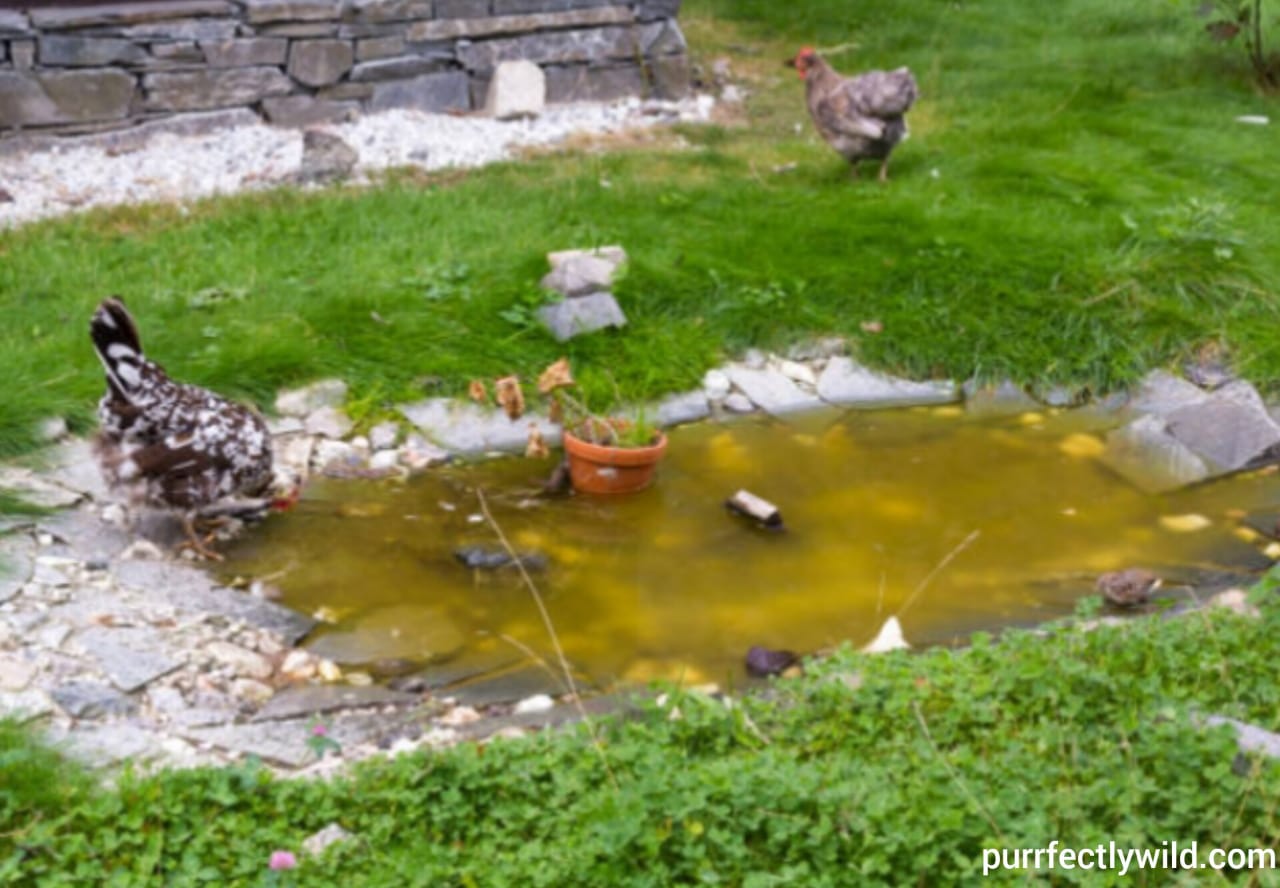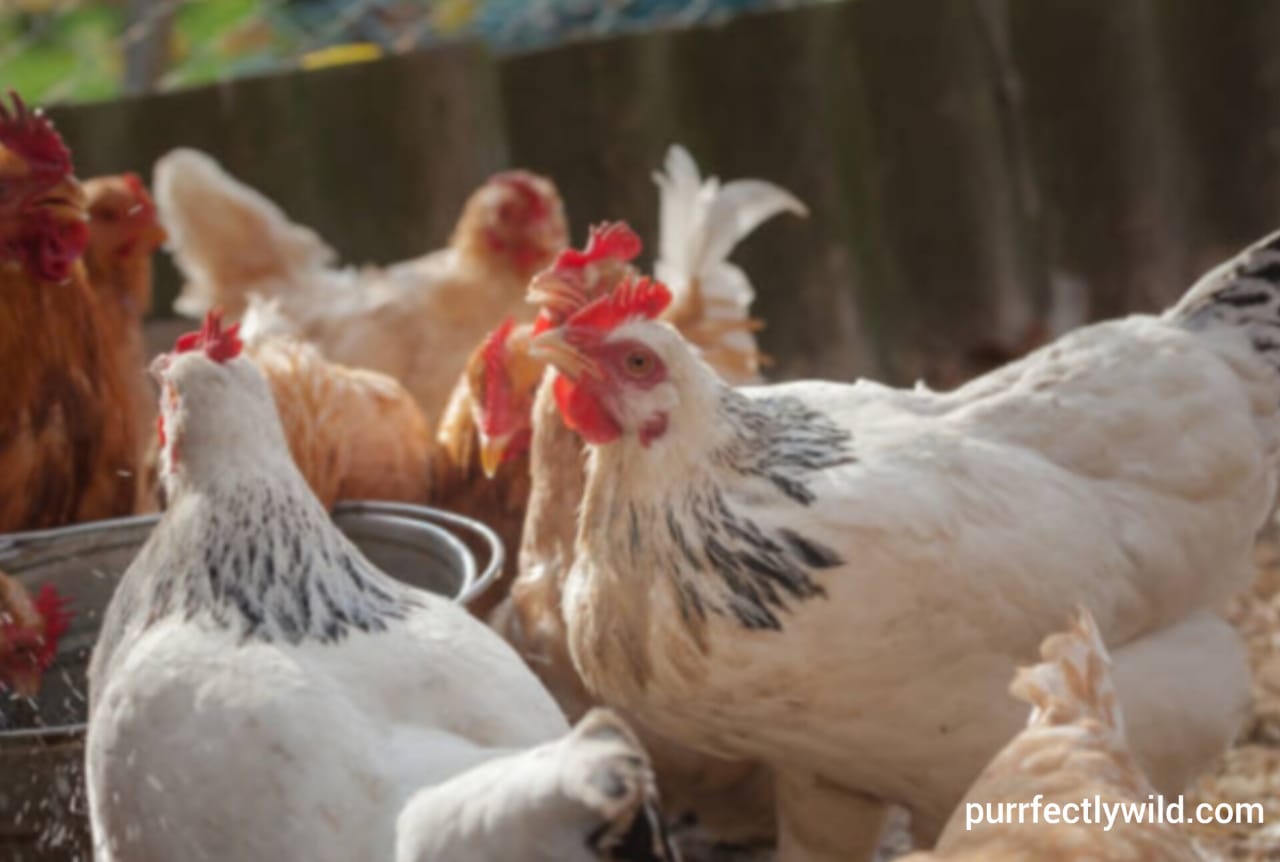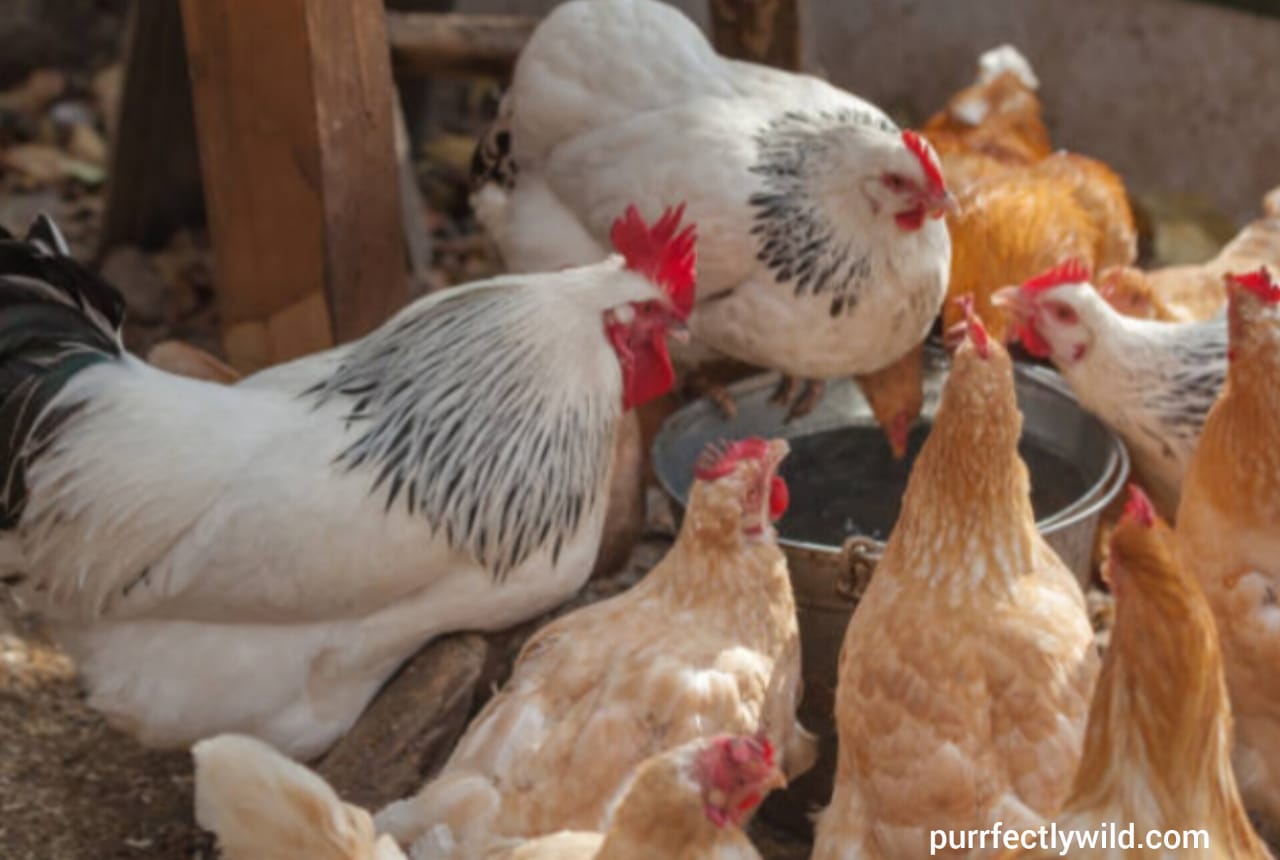Can Chicken swim?
A Warning to Chicken Owners
We’ve all seen videos on YouTube in which a chicken swims backwards in a pool. What a cute idea! Actually, no. On YouTube, not everything we see is good practice. So do a couple of recordings with drifting chickens imply that all chickens can swim? What’s more, is it a decent practice to take your chickens for a plunge?
Can Chicken swim?
While most chickens can in fact drift for brief periods and oar themselves to the edge of a pool or lake, it isn’t great practice to place your chickens into the water and power them to swim. Due to the shape and position of their feet, the structure of their feathers, and the lack of development of their uropygial (oil) gland, which prevents their feathers from becoming soaked, their bodies are unable to swim effectively.
Swimming is also hindered by their inability to use the internal air sacs that keep swimming birds afloat. Driving your chicken to swim is upsetting and unhealthful over the long haul.

Six Reasons Not to Take Your Chicken Swimming
Everyone enjoys cooling off on a scorching summer day. Why not give your chickens a chance to swim this summer? While there are personal motivations to need to take your chicken in your pool (it’s so darn adorable consider every one of those Instagram likes!), There is sound scientific evidence against doing so. Here we’ll consider the main six motivations to keep your hens out of your pool.
1.A chicken’s thin hooks can move next to no water contrasted with the work it’s advancing. Their legs are likewise in the focal point of their bodies, which doesn’t permit them much power while swimming.
2.The feathers of a chicken interlock to some extent, but not enough to create significant air pockets in the feathers that could aid in floatation.
3.The majority of chickens have a small uropygial (oil) gland, allowing for feathers that are only marginally resistant to water.
4.Despite having two lungs and nine air sacs, chickens have not evolved to use their air sacs to help them float.
5.Placing your chicken in the pool is in all likelihood going to make pressure for it. Stress in any creature is probably going to bring down its protection from microorganisms. A calm way of life is better all over for a sound run.
6.Chicken poop is not good for you or your pool, and pool chemicals are not suitable for your chicken’s skin.
Salmonella may be carried by chickens, which could contaminate the pool.
Highlights That Influence Swimming Capacity In Birds
We should look all the more cautiously at the science behind where our chickens stand in regards to a bird’s capacity to drift. What exactly gives a duck, pelican, or swan its ability to float? Furthermore, how much do chickens share these characteristics?
1. The shape and position of a bird’s feet and body.
Check out at the thin paws of a chicken. They’re great for scratching around in the soil and uncovering scrumptious grubs and different pieces. Birds that invest the vast majority of their energy in the water have webbed feet for swimming unequivocally. The webbed feet of a swan move a lot more water than a chicken’s claws do. Subsequently, the waterbird utilizes extensively less work to paddle than a chicken.
Consider the distinction between swimming with your fingers together and somewhat measured contrasted with swimming with your fingers completely separated. You should quit any pretense of swimming in the event that you needed to swim with your fingers separated!
What’s more, the area of the feet matter. Swimming birds will generally have legs and feet situated toward the backs of their bodies. In the water, this gives them an all the more remarkable stroke (it likewise makes their step off-kilter ashore). Due to the fact that its feet are closer to the center of its body, a chickendu does not have this advantage. This assists them with scratching and equilibrium ashore however is a weakness in the water.
Drifting happens when the vertical push of the water adjusts the weight power of an item. The boat-like state of waterfowl gives more surface region than a roundish bird like a chicken. So weighty varieties, similar to Brahmas, struggle with drifting. Chickens can weigh from 12 to 15 pounds. A 15-pound, round object requires a fair amount of upward push to balance, especially if it is squawking and flapping about, which is likely when your chicken gets nervous.
2. The Structure of Their Feathers
If you were to examine the feathers of the majority of birds under a microscope, you would notice tiny hooks running along the feathers’ edges. These snares are called thorns, barbules, and hooklets. Water birds’ quills have advanced to snare together practically like Velcro to trap air. This caught air assists them with drifting. The waterbird can quickly submerge for a bite when it spots a tasty morsel underwater and tightens its wings to release the trapped air.

Barbs are present in the feathers of chickens as well, but these feathers have not evolved to be effective at capturing air for swimming; indeed, a chicken’s under cushion rapidly ingests water, which makes the specific inverse difference: waterlogged quills sink birds.
In any case, because of the spikes and uropygial organ (more underneath), most chickens’ firm external quills (shape feathers) are water-safe. Rather than assisting them in swimming, their resistance to water evolved to shield them from the rain.
However water-safe, feathers immediately become soaked when a chicken is in water. It happens even faster when it frenzies and folds about in the water. Sweating soaks wings, which cause birds to sink. Consider the distinctions between your waterproof watch and your water-resistant watch. Which would you say you will take for a jump?
Will Silkie Chickens Swim? The feathers of some chickens, like Silkies, are not at all water resistant. Their quills are like the under cushion of different chickens-they closely resemble fur. Due to the rapid clogging of their feathers by water, silkies cannot float for more than a few moments.
Furthermore, regardless of whether they were to endure their breaststroke, they’d probably become ill or kick the bucket from hypothermia, as their plumes consume most of the day to dry. Silkies are therefore extremely sensitive to snow and rain.
3. Oil Glands
Many birds have uropygial (oil) organs, which they use in the dressing system and which give various measures of water opposition in their plumes. A chicken’s uropygial organ is little, and a chicken’s sharp nose disperses little amounts of the oil all through its quills. This outcomes in restricted water obstruction in a chicken’s plumes.
A water bird’s uropygial organs are significant. Many such birds have enormous, level noses that are productive in appropriating the oils all through their plumes. Their feathers are pretty resistant to water and therefore absorb very little water.
4. Chickens’ Lungs and Air Sacs
Birds have confounded respiratory frameworks that incorporate two lungs, seven or nine air sacs, and a windpipe. Their bones are covered by air sacs.
A chicken’s air sacs and lungs may be at first supportive in its drifting cycle, however they didn’t develop for that reason. Some exploration estimates that water birds’ air sacs are expanded for buoyancy and flattened for the purpose of jumping. A chicken’s air sacs won’t help them stay afloat for very long because they wouldn’t have learned or evolved such adaptations for water.
5.Chicken Distress in Water
The majority of chickens don’t even like getting wet in heavy rain. ( Also, they will probably feel threatened in a pool (see our article on how to keep your hens healthy during the rainy season).
In spite of the fact that your pullet may not go about as though she loathes the pool, it is most likely correct that creatures feel most secure in their common habitats. Chickens aren’t used to swimming in pools. Most chickens will encounter trouble in the water.
Furthermore, if your chicken does feel threatened, she will likely panic and flap. Once more, fluttering chickens implies wet wings, and wet wings sink chickens.
Regardless of whether your chicken suffocate, rehashed pool encounters are probably going to cause rehashed stressors in her day to day existence. Very much like individuals, worried chickens have brought down protection instruments, so they are bound to become ill.
6. Chickens in Your Pool
While many new pools are being filled and kept up with saltwater, most pools actually depend on locally acquired chlorine to keep them liberated from microbes and green growth. It is probably not healthy for a chicken to absorb this chlorine through her skin.
Consider the consequences of your chicken peeing in your pool, which is even more significant. Chicken droppings could incorporate E. coli, Salmonella, Campylobacter, or Cryptosporidium (frequently called Crypto). Crypto is not susceptible to chlorine, whereas the majority of those bacteria are. There is no proof that Crypto passes from birds to people, however why find out?
Additionally, even if your chicken does not poop in your pool (my chickens frequently poop when they are extremely stressed), it is likely that you will have a poop on your porch before the poultry-pool session is over.
Could Child Chicks Swim?
Baby chickens are susceptible to rapid drowning in very little water and are unable to swim. Because they lack feathers, young chickens quickly become hypothermic and begin to chill. The delicate cushion on child chicks rapidly becomes waterlogged.
To limit this gamble, guarantee you don’t leave vast water compartments around. Child chicks can undoubtedly fall in from roosts and suffocate. To reduce the likelihood of chicks drowning while drinkers attempt to consume, keep drinkers at appropriate heights and positions.
You can likewise put little blocks or shakes in the consumers so that assuming a chick falls in, it can figure out how to exit. If you find a chick that has fallen into the water, gently dry it off with a towel and place it near a source of heat. This activity will shield the chick from hypothermia and in all likelihood save it.
Child chickens are extremely delicate and sensitive.
Conclusion
Remember: as charming as it might hope to see The General kicking his direction to your pool steps, chickens didn’t develop for swimming. Waterlogged chickens can undoubtedly suffocate, and regardless of whether they suffocate, they are probably encountering pressure. Help your chickens and yourself out and keep your chickens out of your pool!


